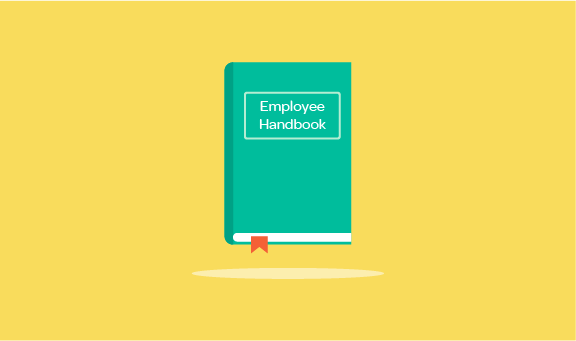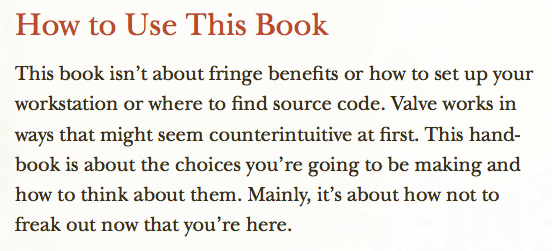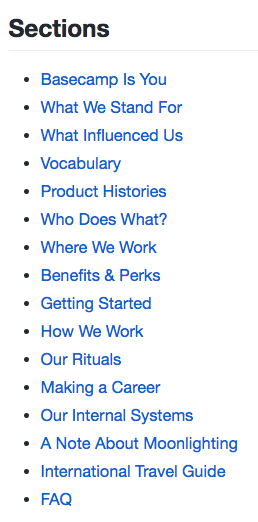
An employee handbook is a vital tool for communicating a company's mission, values, and expectations. It serves as a guide for new hires, providing consistent information about the company's culture, operations, and expectations.

Nikoletta holds an MSc in HR management and has written extensively about all things HR and recruiting.

All companies need to communicate their mission, values and expectations to their employees. Employee handbooks are a good means to put these elements together. Here’s how to write a helpful and engaging employee handbook:
Your handbook’s content and level of detail depends on how you intend to use it. An employee handbook may be a repository of all your policies or a way to welcome new hires.
Using your handbook to guide new hires is a good idea. Melissa Escobar-Franco, Workable’s HR Manager in Boston, says:
“An employee handbook gives new hires tangible information to help them settle into their new jobs. It’s a consistent message on who we are, how we function and what we expect from our employees.”
Without the help of a handbook, it may take employees time to grasp a company’s culture and organization. In 2012, game development company Valve released a handbook for new hires to explain its organizational structure:

A good way to approach creating your handbook is to keep it focused on welcoming new hires and providing only the information they need (e.g. summaries and statements.) You could keep detailed documents of your policies in an intranet, a HR information system (e.g. BambooHR or Namely) or a shared folder.
An effective employee handbook includes:
Craft an outline with these elements in mind. Here’s a possible outline with some examples for each section:
Decide what policies to include based on your specific needs. Provide only short summaries of complicated topics (e.g. benefits) and link or refer to full policy documents. In general, avoid overloading your handbook with prohibitions. Make it more attractive by adding a personal touch like a letter from a senior leader. Here’s an example from the employee handbook of Agnes Scott College:

If you are creating a longer and more complete version of your handbook, explain legal issues too (e.g. at-will employment or worker’s compensation.)
As your company grows and laws change, you may need to address new topics. Communicate your plan to revise and update your handbook (annual or mid-year reviews are useful.) Put a process in place to share every significant change through bulletins, newsletters or other means.
Ensure a great new hire experience with our recruiting solution and its seamless integrations with onboarding tools and HRIS providers.
An unattractive, complicated document risks remaining permanently on employees’ “to-read” list. Take some time to think about your format, layout and audience.

This approach helps Basecamp update its handbook easily through GitHub and get direct feedback. It also adds to their employer brand, as passive candidates, interns and newly hired employees can get insight on how the company works right from the source.
Not all companies make handbooks that create a buzz. But, they can craft effective handbooks with the right design. If you don’t have an internal design team, consider hiring a freelancer. Add pictures, schemes and even videos, when possible, to make your handbook engaging.
Employee handbooks should not read like business contracts or legal documents. To encourage employees to read and remember your messages, use language to your advantage. Here are a few tips:

Employee handbooks are multi-purpose tools. Use them to inform employees about your company’s values and clear confusion on important topics. When you are done writing, ask your attorney to inspect your handbook for legality. And listen to employee feedback to ensure your policies make sense.
What should be included in an employee handbook? The employee handbook is a great way to lay out your policies, expectations of employees, and what they can expect from you as their employer. It also ensures that all legal obligations avoid confusion in the future. What are three examples of policies that could be in the employee handbook? The employee handbook should be clear about the company's policies and practices. It will also include information on how employees can use their private property, confidentiality rules for matters related to work (i.e., social media), as well a section regarding any types of discrimination or harassment that may occur within your organization. Are employee handbooks legally binding? The best way to protect your company against unfair treatment claims is by using an employee handbook. If you don't have one, then be sure that the text of this document clearly indicates what rights employees have.
Put your best foot forward with a branded careers page that will make applicants want to work for you.